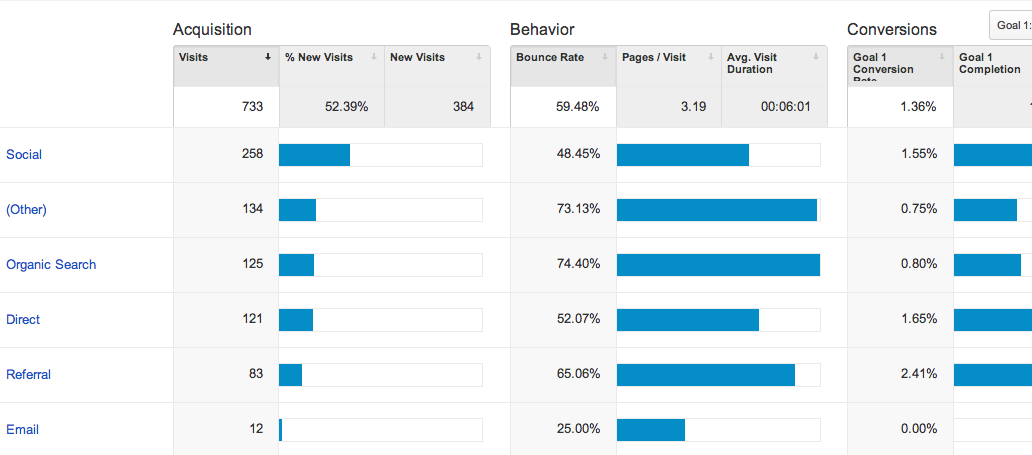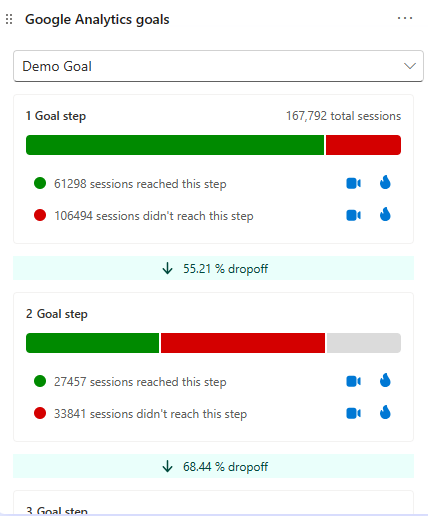Comprehensive List of What Data Is Google Analytics Goals Unable to Track
Comprehensive List of What Data Is Google Analytics Goals Unable to Track
Blog Article
Demystifying Google Analytics Limitations: Reveal What Data Goals Can not Track
In the world of electronic analytics, Google Analytics stands as an effective device that gives important insights right into internet site performance and customer actions. However, in the middle of its capacities, there exist restrictions that typically go unnoticed. Understanding what Google Analytics can not track is vital for a thorough grasp of data analysis and decision-making procedures. From the intricacies of customer interaction with vibrant content to the intricacies of cross-device user journeys, these constraints clarified locations that might remain covered from standard analytics viewpoints. By deciphering these restrictions, a more clear picture emerges, enabling more enlightened techniques and fine-tuned understandings into customer interaction and conversions.

Individual Interaction With Dynamic Content
Customer interaction with vibrant web content plays a vital function in comprehending individual habits on internet sites and optimizing the general user experience. Dynamic material refers to elements on a page that can change without the demand for a complete page reload. This consists of interactive components such as pop-ups, sliders, kinds, and video clips that react to user activities in real-time. By tracking customer communications with dynamic material, website owners can obtain beneficial insights into individual engagement, choices, and actions.
Google Analytics offers numerous devices to track user interactions with dynamic web content, such as event tracking and online pageviews. Occasion monitoring permits you to check certain individual actions, like clicking a switch or watching a video clip, providing information on how users connect with vibrant aspects.
Cross-Device Individual Journeys
Just how can modern-day analytics tools track the complex paths users take across several gadgets in their online journeys? Cross-device customer trips offer a significant challenge for tracking and analyzing user habits accurately. As individuals engage with apps or internet sites using numerous gadgets such as smart devices, desktops, and tablets, it becomes vital to understand how they move between these systems to maximize customer experience efficiently.
Google Analytics deals with limitations in tracking cross-device user journeys as a result of personal privacy worries and technological constraints - what data is google analytics goals unable to track. While it can offer understandings right into private tools' communications, tracking a seamless customer trip across numerous tools stays a challenge. This limitation can result in incomplete data and fragmented customer insights, making it hard for services to create a unified view of the consumer trip
To address this concern, services can utilize advanced analytics devices that offer cross-device tracking abilities, permitting them to obtain a much more alternative understanding of customer habits. By leveraging these devices, organizations can connect the gap in tracking cross-device user journeys and optimize their electronic approaches for a seamless individual experience.
Offline Conversions and Attribution
As services browse the difficulties of tracking cross-device customer trips, an additional crucial element to consider is the realm of offline conversions and attribution in the world of data analytics. While Google Analytics gives valuable insights into on-line individual behavior, it falls short when it comes to tracking conversions that happen offline. This constraint poses a considerable challenge for businesses that have both online and offline sales channels.
Offline conversions, such as acquisitions made in physical stores or with call centers, are necessary to recognizing the full customer journey. Without the ability to connect these offline conversions to details on the internet communications, organizations may have a hard time to precisely determine the effect of their digital advertising initiatives.
To address this void, services can discover alternate options such as incorporating CRM systems with on-line analytics tools or making use of unique discount codes that can be traced back to on the internet projects. By connecting the void in between online and offline information, organizations can get a more extensive understanding of their customers' actions and boost their overall advertising and marketing strategies.
Individual Customer Identification
In the world of data analytics, the capacity to precisely identify individual users throughout various on-line touchpoints is a critical difficulty for companies looking for to individualize and enhance their advertising strategies. While Google Analytics supplies valuable understandings into web user behavior and interactions, it falls brief in enabling the recognition of details people because of privacy worries and technological constraints. Google Analytics utilizes special identifiers such as cookies to track user sessions and habits, but these do not equate to recognizing specific users in an individual feeling.

Information From Secure Pages
Regardless of the increasing frequency of protected web pages on sites, obtaining information from these encrypted resources provides an one-of-a-kind difficulty for electronic analytics platforms like Google Analytics. Protect web pages, indicated by HTTPS in the URL, encrypt data exchanged between the individual's web browser and the internet site's server to make sure privacy and security. While this file encryption is crucial for safeguarding sensitive details, it also presents restrictions for tracking customer behavior and celebration analytics data.
Google Analytics deals with challenges in accumulating in-depth info from safe web pages because of the security methods in area. Consequently, specific information points such as referral resources, keyword searches, and also some individual communications may not be totally captured when customers access a web site through a safe link. This constraint can affect the precision and completeness of the information analysis, causing spaces in understanding customer behavior and preferences on safe pages.
To Get More Info browse this difficulty, electronic experts may require to explore different tracking approaches or leverage other tools specifically created to collect insights from protected pages. By adapting approaches to suit these restrictions, organizations can still derive important analytics in spite of the restrictions offered by encrypted links.
Conclusion
In conclusion, Google Analytics has limitations in tracking customer communication with vibrant material, cross-device customer trips, offline conversions, specific user identification, and information from protected pages. These restrictions prevent a comprehensive understanding of individual behavior and may bring about voids in information evaluation. Regardless of its beneficial insights, Google Analytics might not provide a complete image of customer involvement across numerous touchpoints. It is important for services to be knowledgeable about these limitations and think about supplementary tools for a much more all natural view of their data.
Customer communication with vibrant web content plays a critical function in understanding user behavior on websites and enhancing navigate to this website the total user experience. By tracking user interactions with vibrant material, site proprietors can get valuable insights right into customer engagement, choices, and actions.
Google Analytics utilizes unique identifiers such as cookies to track individual sessions and behavior, yet these do not equate to identifying individual users in an individual feeling.
As an outcome, particular information factors such as recommendation sources, keyword searches, and also some user interactions may not be fully captured when individuals access a site with a secure link.In conclusion, Google Analytics has constraints in tracking individual interaction with vibrant content, cross-device customer trips, offline conversions, individual customer identification, and data from secure web pages.
Report this page